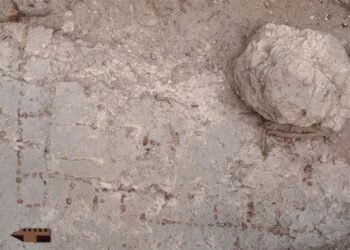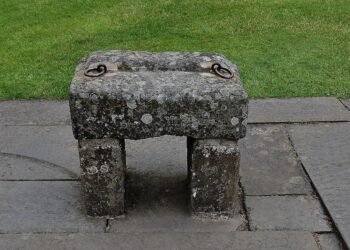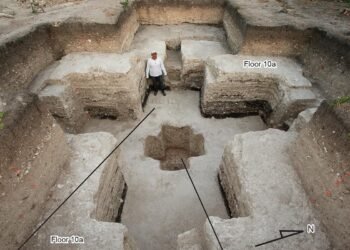A comprehensive study led by researchers from Stockholm University and the Swedish Museum of Natural History sheds light on the significant health challenges faced by Stone Age populations in Scandinavia.
Published in the journal Scientific Reports, the study delves into the microbial landscape of the era, revealing the prevalence of lethal bacterial infections transmitted through various means, including food, water, and surprisingly, intimate contact such as kissing.

The research, led by Helena Malmström from the Human Evolution Program at Uppsala University, focused on 38 individuals from different archaeological sites across Norway and Sweden, spanning a period from approximately 9,500 to 4,500 years ago. These individuals represented both hunter-gatherer and farming communities.
By analyzing microbial DNA obtained from dental samples, the scientists identified a total of 660 microbial species. Among these, several were revealed to possess the potential to cause disease, posing significant risks to ancient populations, particularly in the absence of modern medical interventions.
Notable among these were Neisseria meningitidis, responsible for meningococcal disease, and Yersinia pestis, the bacterium behind the plague. These findings provide early evidence of the presence of these deadly infections in ancient populations.
The transition from hunter-gatherer to farming lifestyles marked a significant shift in microbial exposure and disease patterns. As populations became more settled and interacted closely with livestock and each other, the risk of infection from foodborne pathogens such as Salmonella enterica increased dramatically. The study highlighted cases where individuals from farming communities were infected with Salmonella enterica, potentially leading to fatal outcomes.

Helena Malmström from Uppsala University noted that the shift from nomadic to communal living during the Neolithic period played a crucial role in shaping disease dynamics. The findings underscore the complex interplay between human behavior, environmental factors, and microbial ecology in shaping health outcomes during the Stone Age.
Anders Götherström, who led the research project, said that while pathogens like Yersinia pestis captured attention due to their historical significance, it was infections spread through food that posed the most immediate threat to ancient populations.
The study highlights the challenges faced by ancient Scandinavian societies in combating bacterial infections without the benefit of modern medical advancements.






















